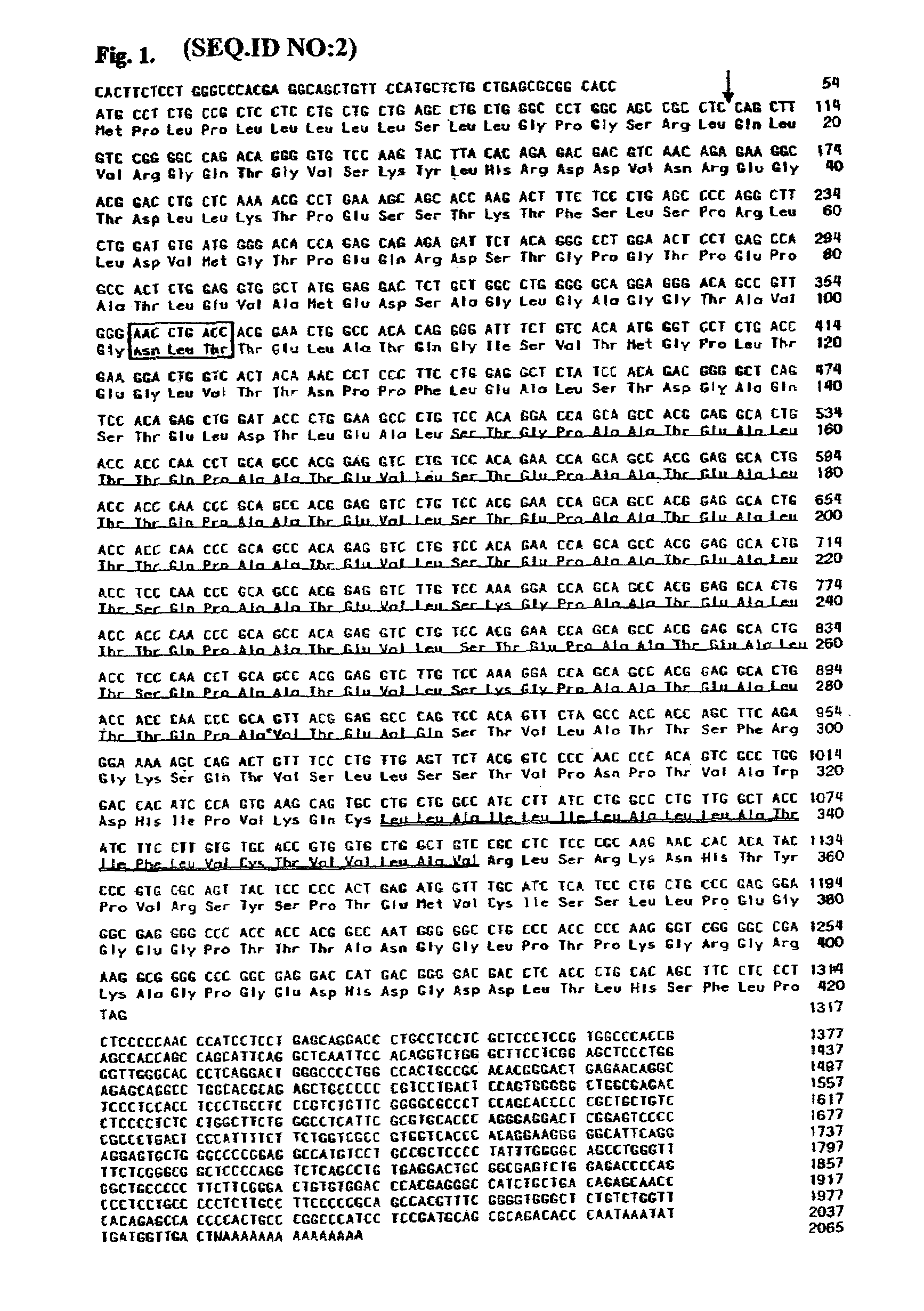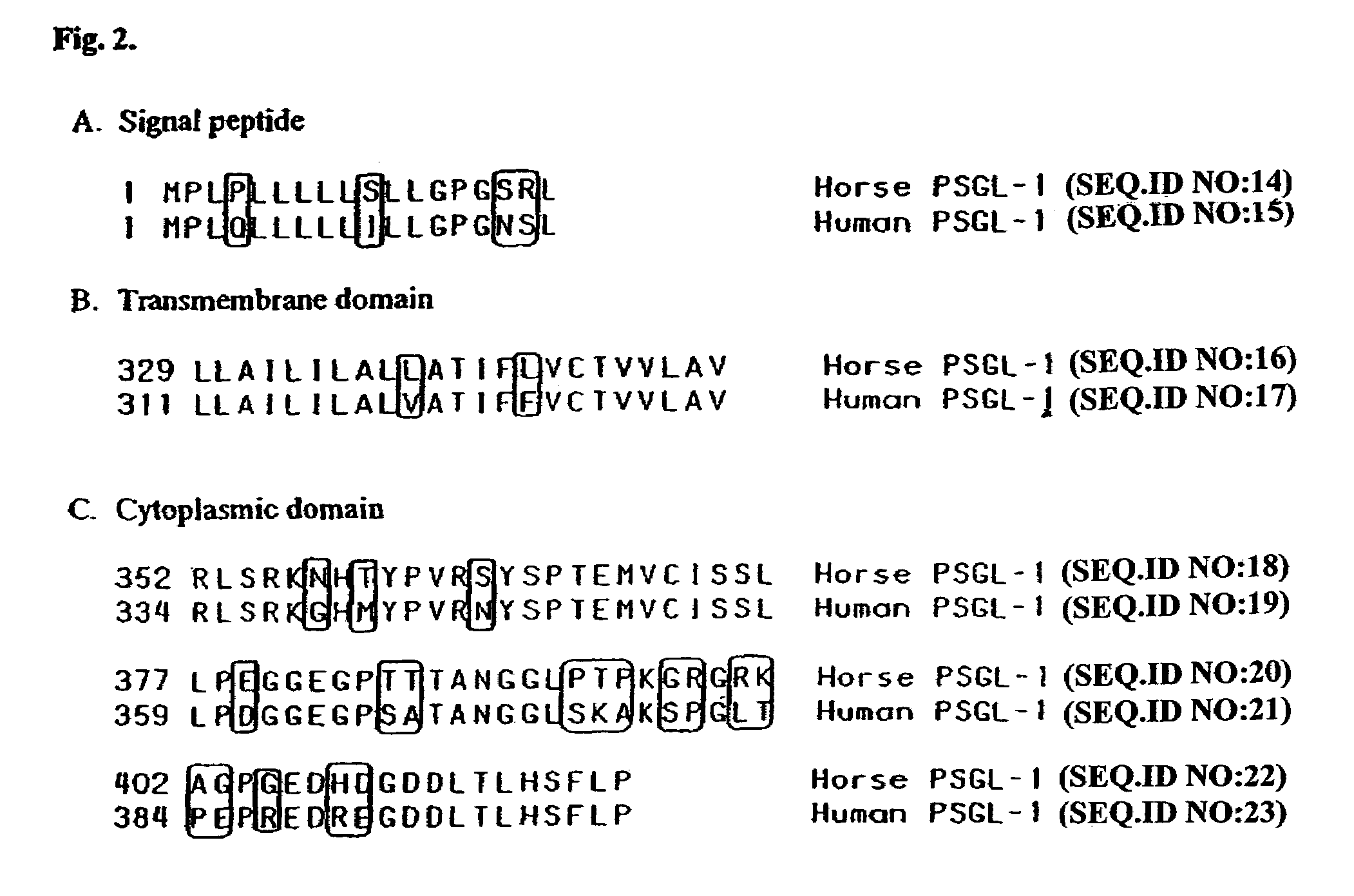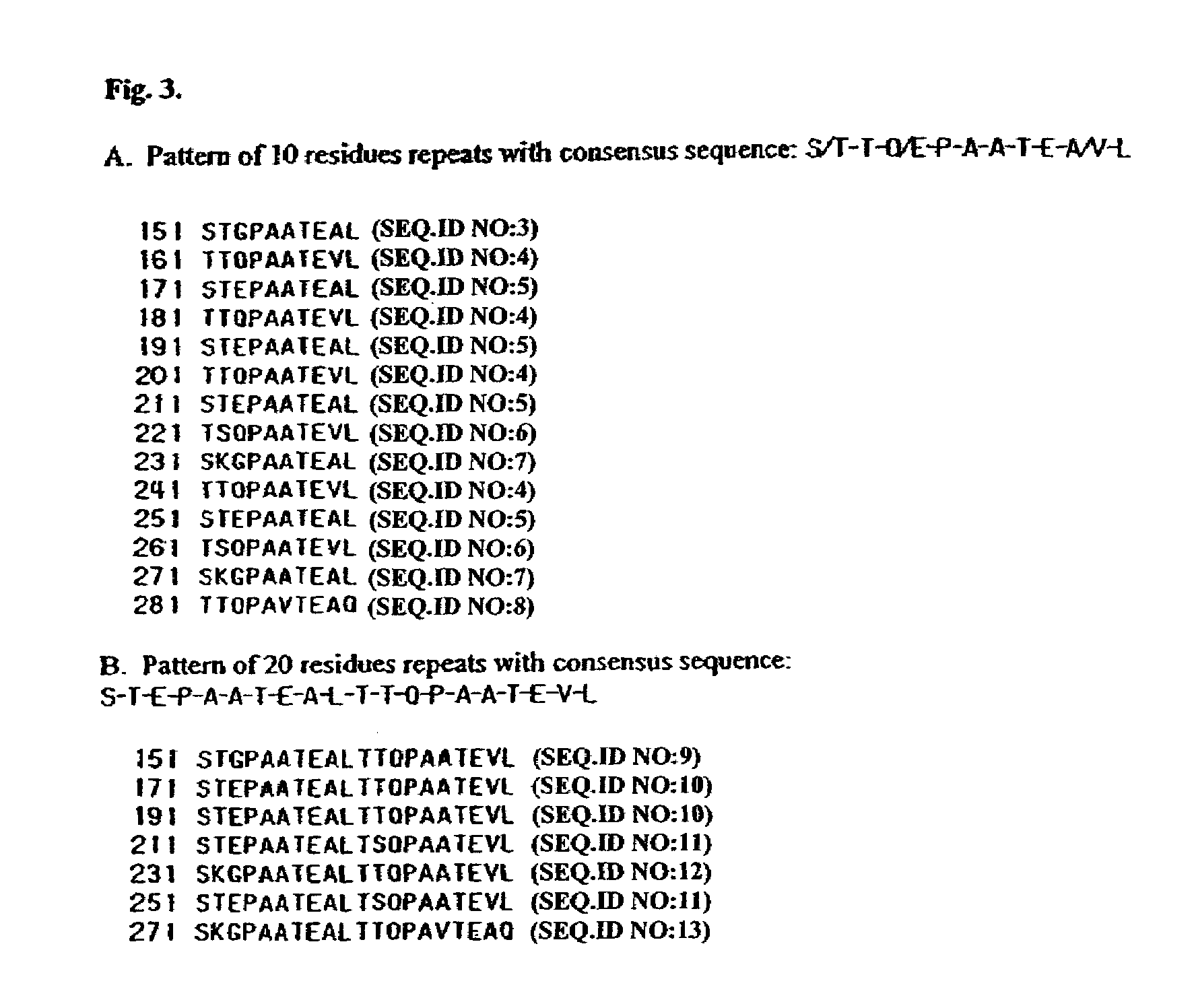Equine P-selectin glycoprotein ligand-1 and uses thereof
a technology of equine pselectin and glycoprotein, which is applied in the field of veterinary medicine, can solve problems such as vascular injury and possibly thrombosis, and achieve the effect of preventing or reducing acute inflammatory responses
- Summary
- Abstract
- Description
- Claims
- Application Information
AI Technical Summary
Benefits of technology
Problems solved by technology
Method used
Image
Examples
example 1
Characterization of ePSGL-1 cDNA and Polypeptide
[0150]Peripheral Blood Mononuclear Cell (PBMC) collection. Blood from a normal healthy horse was collected into 3.8% sodium citrate. Gravity separation by rouleaux formation of the Red Blood Cells from the White Blood Cells was accomplished by allowing the equine whole blood to settle undisturbed at 20° C. temperature for 45 minutes. The Platelet Leukocyte Rich Plasma (PLRP) was collected in a sterile tube, which was then filled with Phosphate Buffered Saline (PBS) and spun at 300×g for 10 min. The supernatant was discarded and the pellet resuspended with 15 mL of PBS. In order for the cells to segregate into three layers, 10 mL of Histopaque-1077 (Sigma®) was added and centrifuged at 600×g for 20 min. The PBMC rich interphase was collected and washed twice with PBS. Cells were then cultured overnight in medium (RPMI-1640 supplemented with 10% Newborn Calf Serum and 1% Penicillin / Streptomycin), at 37° C. All experiments conformed to th...
example 2
Construction of an Equine PSGL-1 Plasmid: pPSGL1-Myc / His
[0163]In this example, cDNA coding the equine PSGL-1 (ePSGL-1) Open Reading Frame (ORF) was amplified by polymerase chain reaction (PCR) using primers that add the unique restriction sites Xho I and BamH I on the 5′ and 3′ ends, respectively. FIG. 4 illustrates the appropriate step-by-step methodology. The ePSGL-1 fragment was purified by agarose electrophroresis and subsequently cloned into a TOPO vector for sequencing. After confirmation of the nucleotide sequence, the ePSGL-1 fragment was excised with XhoI and BamHI and subcloned into the pcDNA3.1 / Myc-His(−) expression vector to obtain a construct according to the invention.
example 3
Establishment of Cell Lines Expressing Functional ePSGL-1 on their Cell Surface
[0164]A functional ePSGL-1 protein is expected to specifically-bind equine P-selectin and efficiently mediate cell signaling after its binding. It is recognized that post-translation modifications of human PSGL-1 is required for efficient binding to P-selectin. Accordingly, as shown schematically in FIG. 5, three types of CHO cells: Core2 (C2GnT=core 2 beta-1,6-N-acetylglucosaminyl transferase) expessing only; Fucosyltransferase VII (Fuc-TVII) expressing only; and C2GnT+Fuc-TVII expressing are co-transfected with the plasmid pePSGL-1-Myc / His to express post-translational modified ePSGL-1 proteins on the cell surface. ePSGL-1 CHO cell binding to P-selectin platelets may then be assessed by flow cytometry to determine relative levels of PSGL-1 / P-selectin binding.
[0165]Furthermore, if the recombinant ePSGL-1 expressed on CHO cells is functional, the binding with P-selectin peptide will mediate cell signaling...
PUM
| Property | Measurement | Unit |
|---|---|---|
| pH | aaaaa | aaaaa |
| Tm | aaaaa | aaaaa |
| temperature | aaaaa | aaaaa |
Abstract
Description
Claims
Application Information
 Login to View More
Login to View More - R&D
- Intellectual Property
- Life Sciences
- Materials
- Tech Scout
- Unparalleled Data Quality
- Higher Quality Content
- 60% Fewer Hallucinations
Browse by: Latest US Patents, China's latest patents, Technical Efficacy Thesaurus, Application Domain, Technology Topic, Popular Technical Reports.
© 2025 PatSnap. All rights reserved.Legal|Privacy policy|Modern Slavery Act Transparency Statement|Sitemap|About US| Contact US: help@patsnap.com



